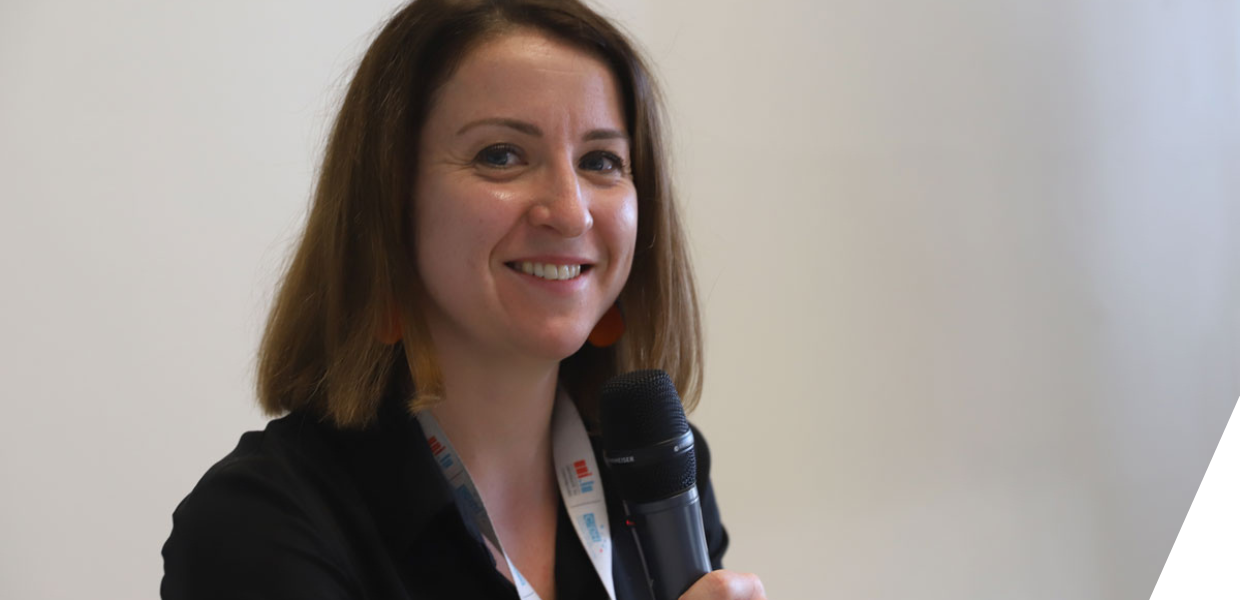How did you enter your profession?
I am a history nerd and bookworm. As a child, I was obsessed with the Habsburg dynasty - I borrowed all the books from the library and read every piece I could find.
In the ‘dark’ nineties, the only thing (without internet) available to me was an encyclopaedia. I flipped through the pages and read dates and facts, feeling that everything about the world, stories about famous people, culture, was available to me in my living room. I was obsessed and began to love history - I wanted to understand the past and the present, not knowing what would be possible only ten years later with the world wide web.
To be ‘closer’ to facts and history, I started studying archives and information science in Marburg, to learn how to read old manuscripts and understand how files and information were stored and how to access and structure them. I then worked in the German Federal Archives and was responsible for the documents in the Military Archives Department and especially about the Second World War. I assisted users in the investigation of National Socialist crimes.
The archive could not quench my thirst for knowledge, and my curiosity brought me back to the university, where I did my PhD in Military Cultural History and Cultural Anthropology. I visited archives on two continents (Europe, Russia and the US) and was still searching for more data and knowledge.
My expertise in WWII and archival science was again in demand when I was responsible for a scanning project at the GHI in Moscow and for a project at the Archives Nationals in Luxembourg.
What are you currently working on?
Since 2018, I have been at the University of Luxembourg at the Luxembourg Centre for Contemporary and Digital History and can once again combine my areas of expertise - information/data management and Second World War/military history.
For the WARLUX project, I am investigating the war experience of Luxembourg's wartime generation. I coordinate the collection of ego-documents (diaries, letters, memoirs) via a crowdsourcing campaign and I lead the digitisation and curation of the documents. We are currently starting an HTR process to make the war letters machine-readable and prepare them for more extensive textual analysis.
After the indexing and HTR process, we also already have to think about the sustainability and accessibility of the collection. With the crowdsourcing campaign, we have created a unique collection of war stories of Luxemburgers. We are a research institution, so we are not an archive - we have a research data repository, of course, but it is not meant for public access. We have to find a solution to make the digital collection accessible.
What are some of the challenges in your role? What are some of your favourite elements?
There are some practical challenges in the work that we are undertaking. After digitising the documents, especially the war letters, which was relatively quick, the tricky part began: indexing and curating the letters. We have received over 5,000 letters; the documents were structured according to the origin, but within the individual collection, we could not go too deep into the inventory for reasons of time and personnel. For some collections, we had to prepare the analysis, indexing each letter (sender, recipient, place, date, keywords, brief content), which takes a lot of time.
In addition, we started the HTR process with Transkribus. Some handwriting can be handled very well with the software, for others, are more challenging, for example, multilingual text sections. A Luxembourgish language model does not yet exist - we hope this will change in cooperation with the Department of Computer Linguistics at the university.
My favourite part of this process is interacting with the families and the donors. The crowdsourcing process was very interactive, and participation can be seen as an additional resource. For example, we got a lot of photo albums where we didn't know who was who - the son or daughter of the person in question could explain the context or even tell us stories about the family. Secondly, the digital heritage aspect is fascinating about my work. After the HTR process, we can visualise and ‘map’ the biographical stories of the people to see the letters and the single stories in another light.
What was your motivation for joining the Members Council?
I already knew Europeana from my years of working in the cultural sector - but the 1914/1918 project and the crowdsourcing campaign impressed me - and I thought: ‘WOW, I want to do that too!’
What caught my attention was the participatory aspect of working with the public. Europeana showed me that it is not only made for professionals, but also for you and me and everyone in Europe and the world, to share, exchange, preserve and benefit from cultural heritage.
What do you plan to do as a Members Councillor?
As a Council Member, I would like to connect science with cultural heritage by engaging in collaboration with university students and researchers with Europeana collections - and advising cultural heritage institutions on how they can improve their catalogues for research.
In addition, I would like to connect the Europeana network with colleagues in Ukraine to support the preservation of Ukrainian online cultural heritage, offer training or share expertise.



